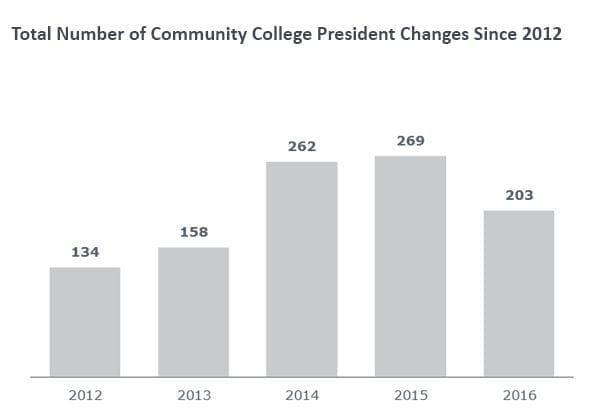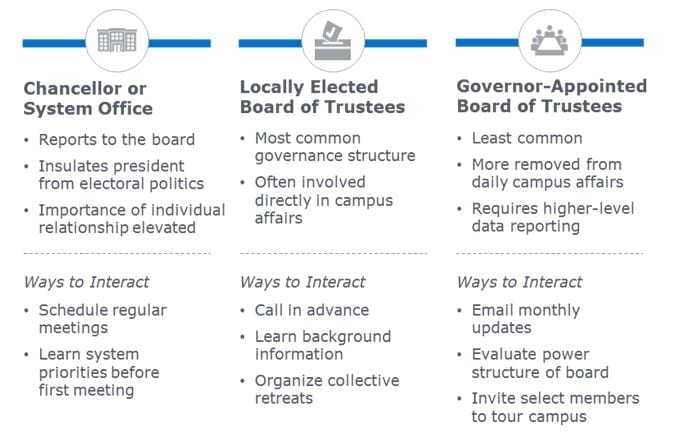How to ensure a seamless transition as a new college president
The community college sector experienced over one thousand presidential transitions in the last five years. However, much of the turnover cannot just be attributed to an aging, baby boomer cohort. The average community college presidential tenure has fallen across the county, in some states by more than half compared to their four-year colleagues.
Related white paper
Sustaining momentum during presidential transitions
The hardest job in higher ed?
Why are these transitions happening now? College presidents’ jobs are harder than ever. First, presidents must contend with an unprecedented convergence of performance-based funding, declining enrollments, and state funding cuts. In turn, board members are placing more pressure on presidents to produce quick results.
Second, presidents preside over an ever-increasing portfolio of responsibilities, including advancement, public relations, labor management, and strategic partnerships. These added duties divide presidents’ attention between numerous tasks and make learning the job even more difficult.
Earn goodwill with the most important constituency
Even the most tenured candidates cannot anticipate the unique challenges that arise early in a president’s term. Conventional wisdom recommends fact-finding from board members, sitting executives, and experienced faculty to learn about the college. While important, this approach overlooks building relationships with key stakeholders.
In particular, new presidents should prioritize system leadership. This often varies among states, but typically resembles a chancellor, locally elected board, or governor-appointed board. Presidents should align their relationship-building approach based on their particular board structure.
Board structure determines interactions
Strong relationships between the president and system leadership ultimately take shape from proactive and frequent communication. Presidents should reach out to board members in advance of their first meeting and solicit their support before launching a new campus initiative.
Presidents should take advantage of the “honeymoon period” to set clear expectations with the board about their respective roles. The board expects strong leadership and will appreciate a firm delineation of duties. Otherwise, tensions can arise from the board becoming too involved in college affairs.


